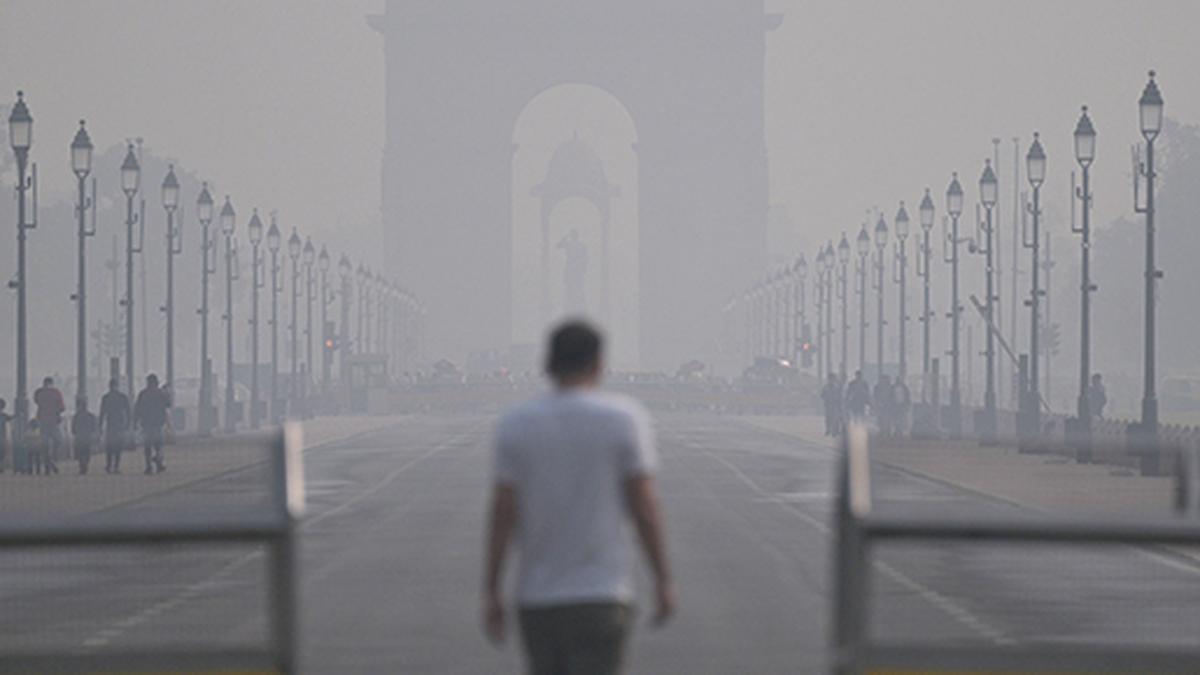
Delhi air pollution: Capital’s air quality improves slightly from 'severe' to 'very poor'
The Hindu
Delhi's air quality improves from 'severe' to 'very poor' category, with AQI at 357, but Anand Vihar remains 'severe'.
The air quality in the National Capital improved from the 'severe' to the 'very poor' category on Sunday (November 24, 2024) morning.
At 8 a.m., the Air Quality Index (AQI) was recorded at 357, falling under the 'very poor' category, compared to the 24-hour average AQI of 412 at 4 p.m. on Saturday (November 23, 2024) , according to the Central Pollution Control Board.
However, Anand Vihar remained in the 'severe' category with an AQI of 404.
Delhi's air quality has remained hazardous for nearly a month. On October 30, it first slipped into the 'very poor' category and stayed there for 15 days. It worsened further last Sunday (November 17, 2024) as Delhi recorded 'severe' air quality and stayed so on Monday (November 18, 2024) and Tuesday (November 19, 2024) .
By Wednesday (November 20, 2024) , the air quality was in the 'severe plus' category. Favorable wind conditions brought slight relief on Thursday but the air quality began deteriorating again, nearing the 'severe' category, on Friday (November 22, 2024). Delhi's air quality slipped back to the 'severe' category on Saturday (November 23, 2024).
The 'severe' category poses serious health risks, especially due to fine particulate matter (PM2.5), which can penetrate deep into the lungs and enter the bloodstream, causing long-term health issues.
The weather office said the minimum temperature was recorded at 12 degrees Celsius. It has forecast shallow fog during the morning or night hours, with the maximum temperature expected to hover around 28 degrees Celsius.

After a long, tiring day all we want is to jump right on our cosy beds and rest comfortably on our soft, fluffy pillows, right? Pillows are not quite appreciated as much as electric cars or air-fryers, for instance. Pillows are a wonderful man-made creation that has improved the lives and sleep of people across the globe. Did you know ages ago people used to rest their heads on a HARD ROCK? So how did humans go from sleeping on stones to cosy, fluffy and soft pillows today? Let’s get into the origin of your everyday pillows!

As the November 30 deadline nears for installing vehicle location tracking devices (VLTD) and emergency panic buttons in public service and nationally permitted goods vehicles in Karnataka, transport unions representing cab, bus, and truck operators are urging the government to reconsider the mandate. They argue that the high cost of these devices and a lack of awareness have made it difficult for many vehicle owners to comply with the requirement.









